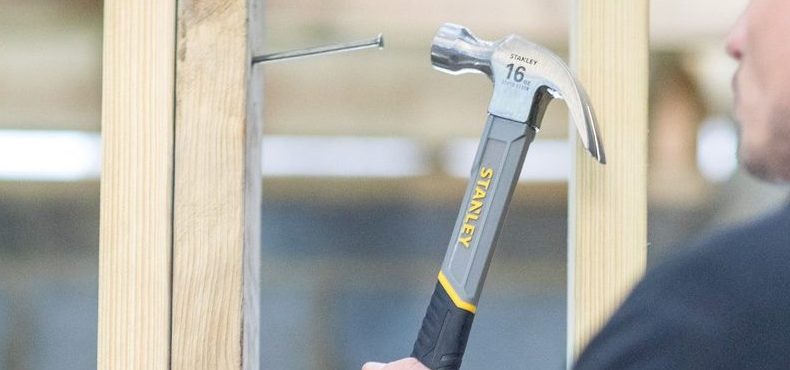A nail gun can be a great addition to your tool box and, depending on the job at hand, can save you considerable time while making DIY projects much easier to complete.
Whether you’re a professional contractor or DIY enthusiast, nail guns offer speed and precision for a wide range of DIY tasks. However, with several types of nail guns to choose from, whether you’re laying hardwood floors or building furniture, you’ll need to choose the right one.
Keep reading as we dive into the different nail gun types, covering their unique features and ideal uses. So, no matter what job you’re working on, we’ll help you select the right nail gun for your needs.
1st Fix VS 2nd Fix Nailer
Before we jump into the different types of nail guns and their features, it's important to understand the difference between a first fix nail gun and a second fix nail gun.
1st fix nailers, such as roofing nail guns, are designed for heavy-duty tasks and provide excellent holding strength. They typically use larger nails, making them more visible, which is why they're used during the early stages of construction when holding power is more important than appearance. These guns are generally used during the initial phase of building works, which is why they're referred to as "first fix."
In contrast, 2nd fix nailers are ideal for tasks requiring accuracy and precision, especially when working with more delicate materials like skirting boards and door frames. While they offer less power than 1st fix guns, they are perfect for jobs where you want the nails to remain less obvious, as they use much smaller, thinner nails.

Types of Nail Guns
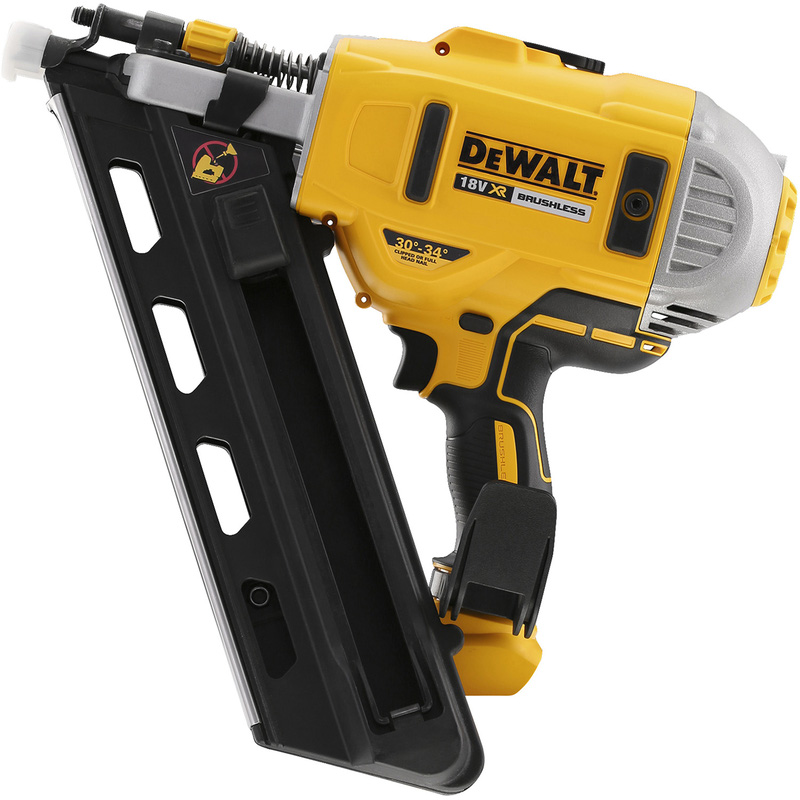
Framing Nail Gun
A framing nail gun is a type of 1st fix nail gun which means it’s designed for use on tough materials. It’s perfect for high-volume work and is a popular choice for construction jobs which could include nailing into things like fencing, wooden decking, and stud work.
They’re also ideal for use on more fragile surfaces such as plasterboard or plaster as they’re less likely to cause cracks and chips. Framing nail guns typically use large 14-16 gauge nails so they will remain quite visible when in place. However, they’re the most versatile in terms of what material they can be used on.
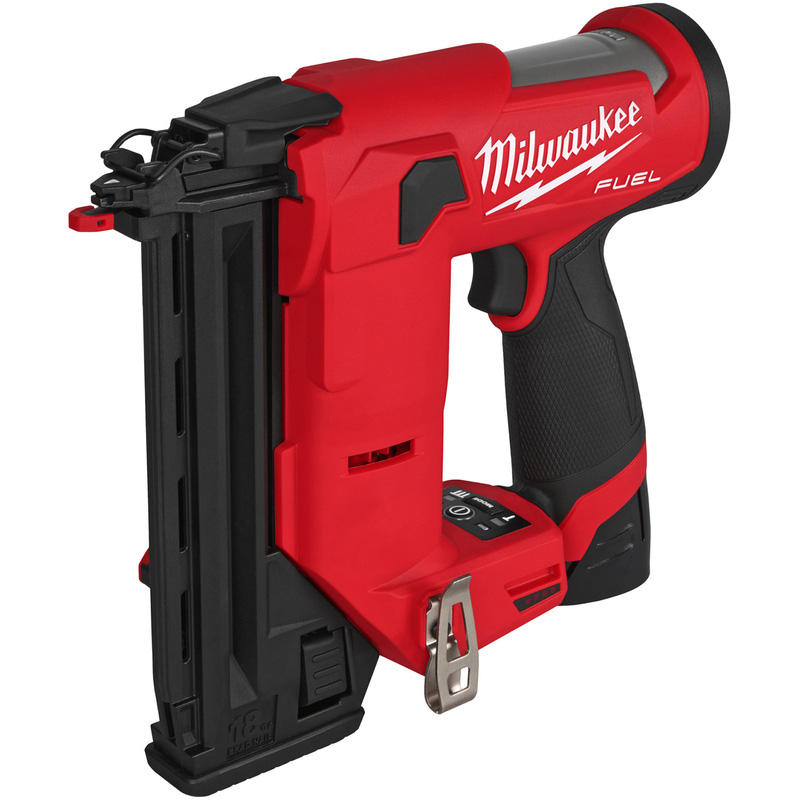
Brad Nail Gun
A brad nail gun, also referred to as a brad nailer, is a type of 2nd fix nail gun meaning that it’s suitable for use on thinner materials like skirting boards or carpets. They’re a popular choice for carpentry jobs and can be used to assemble things such as cabinets and shelving.
They can hold a variety of different nail lengths, anywhere from 16mm to 63mm and often accommodate nail diameters of 18 gauge. The size of the nails mean they blend seamlessly into the material being worked on. That said, care needs to be taken to avoid splitting softer or thinner pieces of wood.
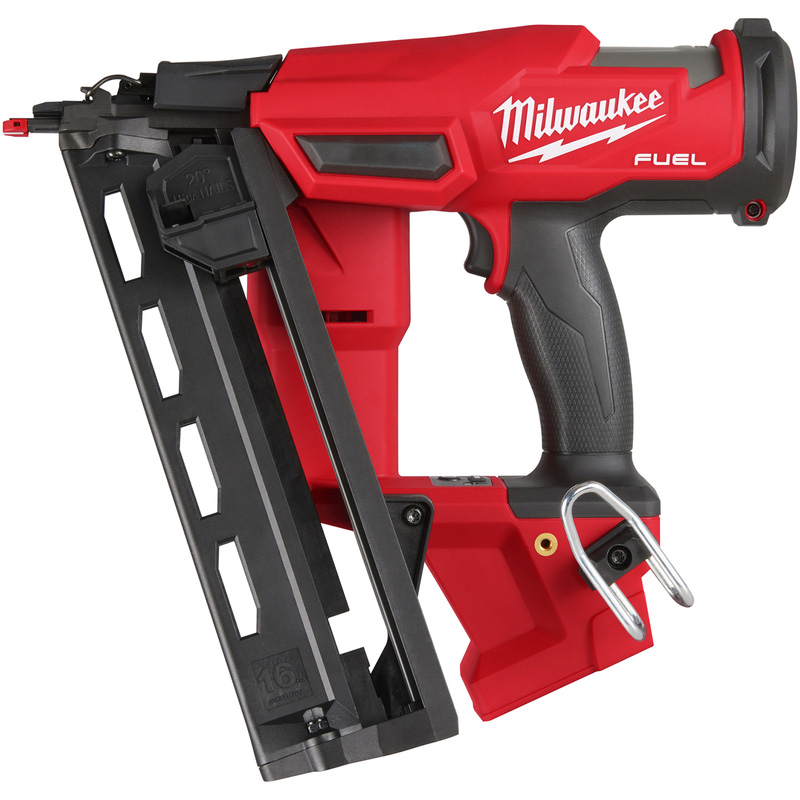
Finish Nail Gun
A finish nail gun is designed for heavy-duty use putting it into the category of a 2nd fix nail gun. When compared to brad nail guns, and depending on the model, they usually carry 15-16 gauge nails. As these nails have larger heads they have excellent holding power.
You can use a finish nail gun on interior and exterior surfaces and they’re perfect for things like door risers, windows, sheds, and doors. Many finishing nail guns feature an angular design making them a great option for tight or awkward spaces. Keep in mind that they can be quite heavy, so practice may be required to get the most out of it.
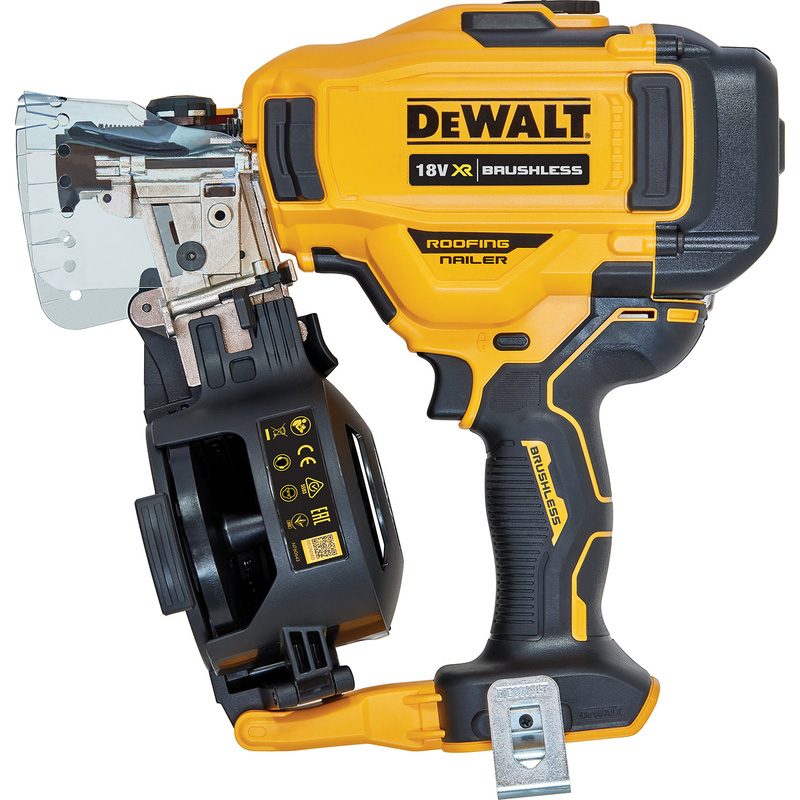
Roofing Nail Gun
A roofing nail gun, as the name suggests, is specifically designed to be used on a range of roofing materials like wood shingles, asphalt, underlay, and corrugated roofing. This of course means it’s not as versatile as other nail gun types and tends to be favoured by tradespeople as opposed to DIYers.
It’s a very robust nail gun but it’s also large and heavy. This means it can be quite cumbersome to use and takes a little bit of practice as applying too much or too little pressure could result in roof leaks if you’re not careful. The key benefit of using a roofing nail gun is the speed at which you can get your work done.

Stapler Gun
A stapler gun, sometimes referred to as a nailer gun, has much less power compared to other nail gun types. You have the traditional manual variety, or if you want something that packs more of a punch, you can opt for a staple gun that’s operated by air or battery. In either case, both are suited to lighter work and work well on upholstery, carpets, and insulation materials.
The benefit of an air or battery staple gun is that they’re less labour intensive and much quicker making them ideal for high volume work in a commercial setting, such as an upholstery workshop.
Nail Gun Power Sources
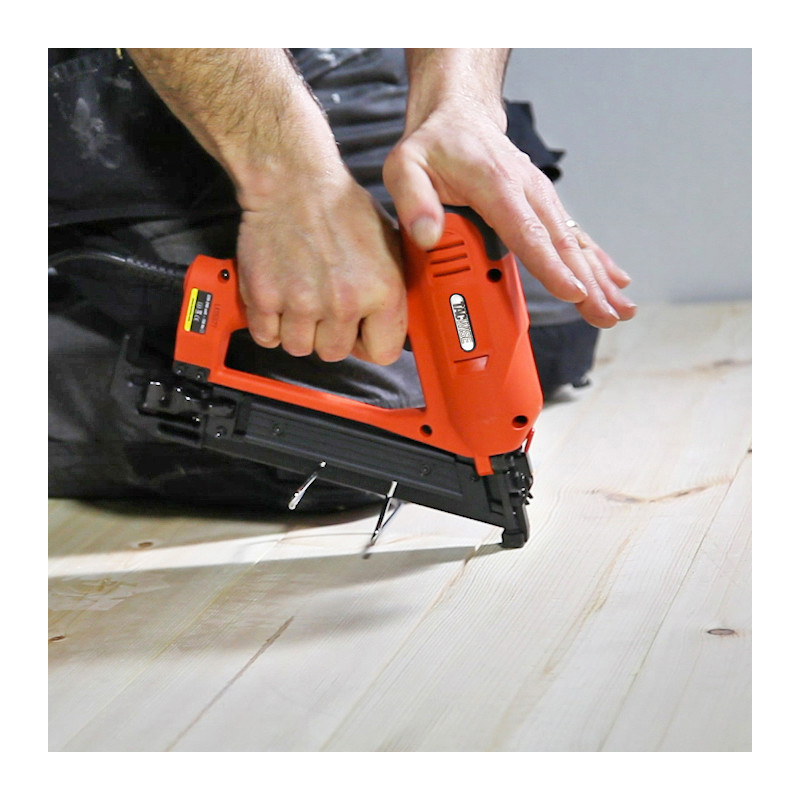
Electric Nail Gun
A corded nail gun has the significant benefit that it won’t run out of power, nor will power diminish over time. So, if you’re planning on undertaking any high volume jobs, a nail gun that’s powered by electricity is your best bet.
As they don’t carry the weight of an in-built battery, they usually weigh less. This makes them easier to use and more manoeuvrable, making them perfect for those awkward to reach places, or if you’re working on long-duration projects. After all, a heavy nail gun could see fatigue setting in pretty quickly!
However, keep in mind that you’ll be limited on where you can use a corded nail gun simply because you’ll need to be in close proximity to a power source. The health and safety risks posed also mean it’s not possible to use an electric nail gun outdoors.
Advantages
-
Lightweight and manoeuvrable
-
Consistent power with no decline
Things to Consider
-
Not suitable for outdoor use
-
Needs a power supply
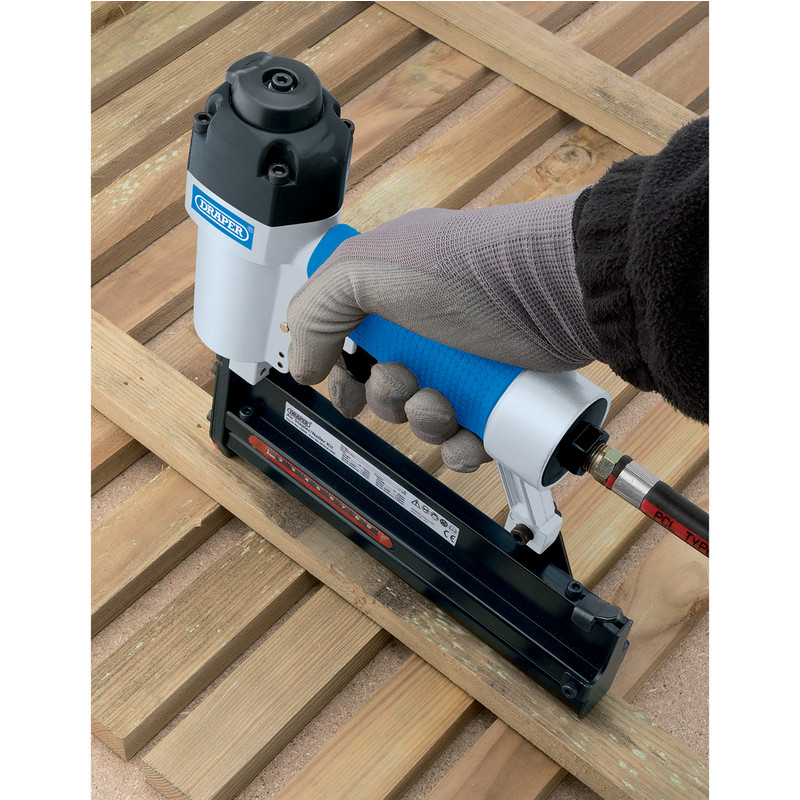
Pneumatic Nail Gun
Pneumatic nail guns, sometimes referred to as air compressor nailers, are powered by air which comes from a gas powered air compressor. They tend to be more powerful when compared to cordless nail guns and for that reason are best suited for jobs where material requires a bit more holding power.
As with electric nail guns, you’ll have less freedom of movement due to the gun being tethered by its connection to an air hose. It’s also worth noting that, due to the air compressor, you may be limited to working in one place as they’re not always easy or practical to move around.
That said, you can increase their mobility by making use of a portable air compressor and an extra-long air hose. Both of which can allow you to perform various nailing tasks, even those outside such as laying a patio or building a garden shed.
Advantages
-
Heavy duty and robust
-
Powerful
Things to Consider
-
Limited freedom of movement
-
Requires an air compressor for power

Battery Nail Gun
The greatest advantage of a battery powered nail gun is its portability. No matter where you’re working, whether it’s in the loft, garden, or even in a commercial setting on site, it’s easy to get the most out of a nail gun that’s powered by its inbuilt battery.
You’ll find that with better freedom of movement, this increases the versatility. So, if you plan on using a nail gun for a variety of jobs both in and out of the home, this could be the better option.
It’s important to consider however, that the in-built battery adds to the weight of the nail gun which could make them a little more difficult to use. The battery also means they have a limited run time, where power supply could reduce over time and eventually run flat. So, they may not be the best option for heavy-duty or high-volume work.
Advantages
-
Cordless and portable
-
Can be used indoors or outdoors
Things to Consider
-
Power can diminish over time
-
Inbuilt battery increases weight
-
Can be more expensive to purchase
Nail Gun Considerations
Magazine Capacity
The magazine capacity of a nail gun refers to how many nails the gun can carry at any one time. A nail gun with higher capacity means you’ll spend less time reloading making them better suited for high volume work. Keep in mind that the more nails the gun carries, the heavier it’s going to weigh.
Corded VS Cordless
Corded nail guns are available as either gas or pneumatic (air). These tend to weigh much less making them easier to use and handle. However, there need for a power supply means you’re limited on where you can use them. Cordless nail guns, while heavier, are portable making them a little more versatile.
Trigger Options
A nail gun with sequential firing tends to be considered safer because the user has to press the safety tip followed by the trigger. This allows for greater control and better precision. Conversely, a nail gun with bump firing doesn’t require a sequence to be followed. Instead, you simply press the safety tip against a surface to release the nail, which is great for speed.
Nail Gun Weight
Nail guns with inbuilt batteries, such as roofing nailers, are heavier meaning they could be more difficult to use, especially for long periods of time. However, it’s important to note that while lighter nail guns can be easier to work with they’re not always suited to more robust materials instead being best for things like upholstery and thin wood.
Nail Gauge
Nail gauge refers to the thickness of the nail that can be used with the gun, this can differ depending on the type of nail gun and manufacturer. It’s worth pointing out that many nailers can accommodate different gauge nails. 14 gauge nails are thicker and best for construction or roofing work. Whereas, 16 or 18 gauge nails are suited to less robust materials like fabric.






